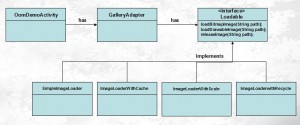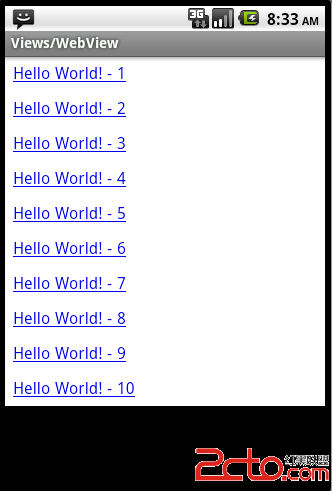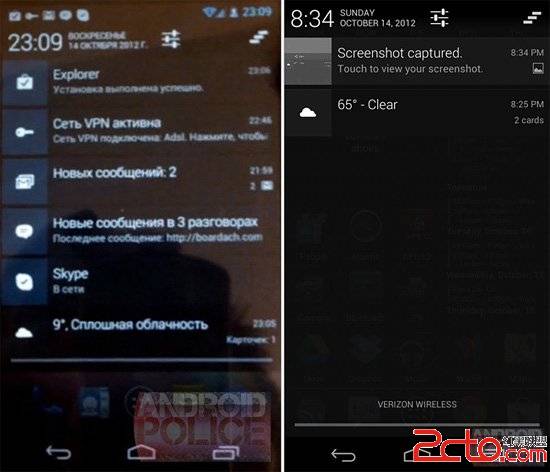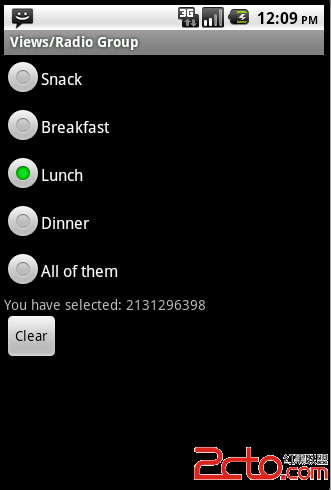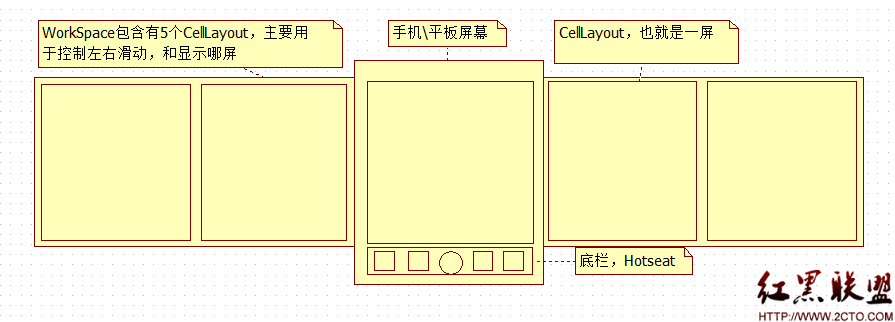Android之Handler高级
现在我们首先就有一个问题,我们使用myThreadHandler.sendEmptyMessage(0);发送一个message对象,那么Handler是如何接收该message对象并处理的呢?我先画一个数据结构图:

从这个图中我们很清楚可以看到调用sendEmptyMessage后,会把Message对象放入一个MessageQueue队列,该队列属于某个Looper对象,每个Looper对象通过ThreadLocal.set(new Looper())跟一个Thread绑定了,Looper对象所属的线程在Looper.Loop方法中循环执行从MessageQueue队列读取Message对象,并把Message对象交由Handler处理,调用Handler的dispatchMessage方法。
现在我们再来看一下使用Handler的基本实现代码:
// 主线程中新建一个handler
normalHandler = new Handler() {
public void handleMessage(android.os.Message msg) {
btnSendMsg2NormalHandler.setText("normalHandler");
Log.d(Constant.TAG, MessageFormat.format("Thread[{0}]--normalHandler handleMessage run...", Thread.currentThread()
.getName()));
}
};
...
//发送消息到hanlder
myThreadHandler.sendEmptyMessage(0);
你现在已经很清楚了sendEmptyMessage到handleMessage的过程,途中经过Looper.MessageQueue队列,转由Looper所在的线程去处理了,这是一个异步的过程,当然Looper所在的线程也可以是sendEmptyMessage所在的线程。
看了上面你也许还是迷惑不解,那么什么要Looper了,跟我们要用的Handler又有啥鸟关系呢?
我在前面一直强调在主线程中使用handler,为什么要这么说呢,因为你在自己new一个新线程中去像我前面那样简单建立一个Handler,程序执行是会报错的:
java.lang.RuntimeException: Can't create handler inside thread that has not called Looper.prepare()
at android.os.Handler.<init>(Handler.java:121)
at com.cao.android.demos.handles.HandleTestActivity$MyThread$1.<init>(HandleTestActivity.java:86)
at com.cao.android.demos.handles.HandleTestActivity$MyThread.run(HandleTestActivity.java:86)
为什么在主线程中不会报错,而在自己新见的线程中就会报这个错误呢?很简单,因为主线程它已经建立了Looper,你可以打开ActivityThread的源码看一下:
public static final void main(String[] args) {
SamplingProfilerIntegration.start();
Process.setArgV0("<pre-initialized>");
Looper.prepareMainLooper();
ActivityThread thread = new ActivityThread();
thread.attach(false);
Looper.loop();
if (Process.supportsProcesses()) {
throw new RuntimeException("Main thread loop unexpectedly exited");
}
thread.detach();
String name = (thread.mInitialApplication != null)
? thread.mInitialApplication.getPackageName()
: "<unknown>";
Slog.i(TAG, "Main thread of " + name + " is now exiting");
}
在main函数中它已经做了这个事情了,为什么要调用 Looper.prepareMainLooper(); Looper.loop();我们可以进去看一下,在prepareMainLooper方法中新建了一个looper对象,并与当前进程进行了绑定,而在Looper.loop方法中,线程建立消息循环机制,循环从MessageQueue获取Message对象,调用 msg.target.dispatchMessage(msg);进行处理msg.target在myThreadHandler.sendEmptyMessage(0)设置进去的,因为一个Thead中可以建立多个Hander,通过msg.target保证MessageQueue中的每个msg交由发送message的handler进行处理,那么Handler又是怎样与Looper建立联系的呢,在Handler构造函数中有这样一段代码:
mLooper = Looper.myLooper();
if (mLooper == null) {
throw new RuntimeException(
"Can't create handler inside thread that has not called Looper.prepare()");
}
mQueue = mLooper.mQueue;
在新建Handler时需要设置mLooper成员,Looper.myLooper是从当前线程中获取绑定的Looper对象:
public static final Looper myLooper() {
return (Looper)sThreadLocal.get();
}
若Looper对象没有创建,就会抛异常"Can't create handler inside thread that has not called Looper.prepare()"
这跟我前面讲的是一致的。所以我们在一个新线程中要创建一个Handler就需要这样写:
class MyThread extends Thread {
public void run() {
Log.d(Constant.TAG, MessageFormat.format("Thread[{0}]-- run...", Thread
.currentThread().getName()));
// 其它线程中新建一个handler
Looper.prepare();// 创建该线程的Looper对象,用于接收消息,在非主线程中是没有looper的所以在创建handler前一定要使用prepare()创建一个Looper
myThreadHandler = new Handler() {
&n
补充:移动开发 , Android ,